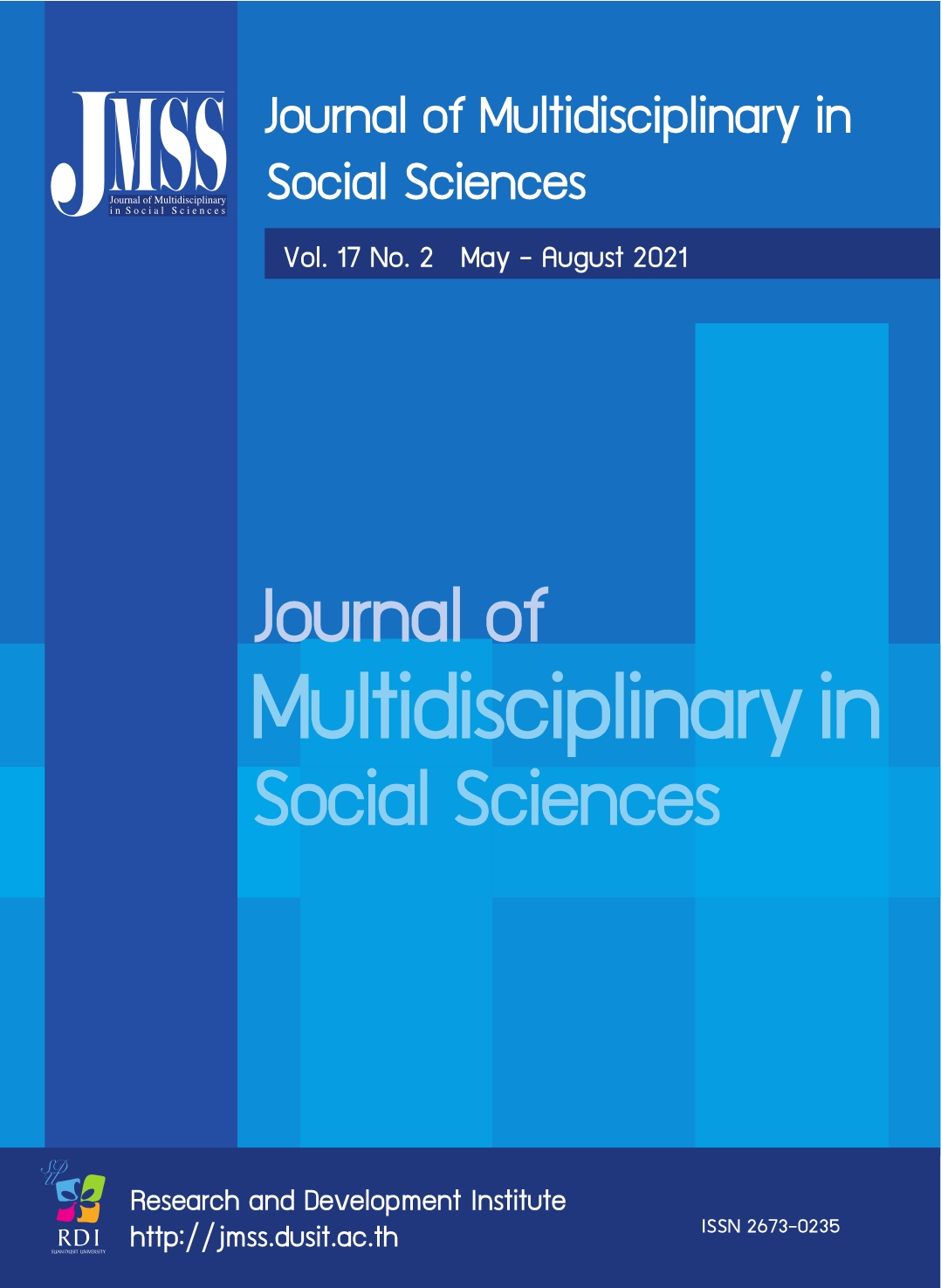A Study on Factors Influencing Chinese Consumers’ Attitudes Towards Intention of Online Shopping for Thai Products
Keywords:
Consumer, Attitude, Intention, Online, ThaiAbstract
Past literature suggests that consumers’ attitude has a direct influence on buying intention. However, the evaluation of both positive and negative attitudes towards purchase intention on motives had been scarce. Hence, this research attempts to examine the factors influencing Chinese consumers’ attitudes toward intention of online shopping for Thai products and constructs drawn from functional and non-functional motives are conducted to identify factors that potentially affect Chinese online consumer decision making for purchasing Thai products. A survey was carried out of 303 consumers who had purchased Thai products. Multiple Regression in structural equation modeling (SEM) was applied for data analysis. As expected, different culture, previous purchasing experience, consumer style and merchant’s trustworthiness were found to have a significant relationship in explaining the attitude of always eager to buy Thai products towards online shopping intention. Nevertheless, perceive brand value was found to have no significant relationship with the attitude of always eager to buy Thai products toward online shopping intention. The results of this study indicated that different culture and previous purchasing experience can also explain the attitude of very cautious to buy Thai products toward online shopping intention. It is important for the manufacturers and the Thai government to implement programs for building brand awareness, the recognition of different cultures and improvement of service quality as they are the main contributing factors that enhance continual use of Thai products.
References
Aldhmour, F. (2016). An Investigation of Factors Influencing Consumers’ Intention to Use Online Shopping: An Empirical Study in South of Jordan. Journal of Internet Banking and Commerce, 21(2), 1-50.
Bojei, J., & Wong, C. (2011). Factors Influencing Repurchase Intention of Smartphones. Retrieved November 25, 2015, from http://www.wbjconpro.com/419-Hoo.pdf
Brynjolfsson, E., & Hitt, L. M. (2000). Beyond Computation: Information Technology, Organizational Transformation and Business Performance. Journal of Economic Perspectives, 14(4), 23-48.
Chen, F., & Jiang, A. (2013). The Consumers’ Knowledge of Product, Knowledge Acquisition Channels and Consuming Behavior-----Based on 1803 residents tea consumption survey data of Hangzhou. Journal of Business Economics, 20(1), 52-57.
Chen, L. (2015). Kuoguo gongsi shichang jinru yu zhongguo peiyu zizhu guoju pinpai yanjiu [Entering the market of the international company and the China study on foreign brands research.]. China: Economic science Press.
Enrique, B. A., Carla, R. M., Joaquín, A. M., & Silvia, S. B. (2008). Influence of online shopping information dependency and innovativeness on internet shopping adoption. Online Information Review, 32(5),648-667.
Hartmann, D. (2006). Over the edge: How the pursuit of youth by marketers and the media has changed American culture. Contemporary Sociology, 35(4), 392.
Hernandez, A., & Kuster, I. (2012). Brand impact on purchase intention: An approach in social networks channel, Journal of Economics and Business letter, 1(2), 1-2.
Hu, Y. (2014). The impact of cultural cringe on consumer behavior in China (Master’s thesis). Island: University of Rhode Island.
Hsu, C. L., Lin, J. C., & Chiang, H. S. (2013). The effects of blogger recommendations on customers’online shopping intentions. Internet Research, 23(1), 69-88.
Jayawardhena, C. (2004). Personal values’influence on e-shopping attitude and Behavior. Internet Research, 14(2), 127-138.
Kassim, N., & Abdullah, N. (2008). Customer Loyalty in e-Commerce Settings: An Empirical Study. Journal of Electric Markets, 18(3), 275-290.
Li, R., Kim, J. J., & Park, J. S. (2007). The Effects of Internet Shoppers’ Trust on Their Purchasing Intention in China, Journal of Information Systems and Technology Management, 4(3), 269-286.
Mittal, A. (2013). E-commerce: It’s Impact on Consumer Behavior. Global Journal of Management and Business Studies, 3(2), 131-138.
Nunthipong, B., & Khongsawatkriat, K. (2011). Consumer behavior of decision making on buying online products: Area of studies at Bangkok. Journal of Finance Investment Marketing and Business Management, 2(2), 65-88.
Sheth, J. N. (1983). An integrative theory of patronge preference and behavior. In Darden WR, Lusch RF, editors, Patronage behavior and retail management. (pp.9-28) Orlando (FL): Elsevier Science Publishing Co.
Smith, A. M. (2015). Attitude Tracing and Control. Journal of Applied Philosophy, 32(2),115-132
Wang, E. S. T., & Chou, N. P. Y. (2014). Consumer characteristics, social influence, and system factors on online groupbuying repurchasing intention. Journal of Electronic Commerce Research, 15(2), 119.
Yoldas, S. (2011). A Research About Buying Behaviours Of Online Customer Comparison of Turkey with UK (Master’s thesis). London: University of Roehampton.
Yoo, B., & Donthu, N. (2001). Developing and validating a multidimensional consumer-based brand equity scale. Journal of Business Research, 52(1), 1-14.
Downloads
Published
How to Cite
Issue
Section
License

This work is licensed under a Creative Commons Attribution-NonCommercial-NoDerivatives 4.0 International License.








